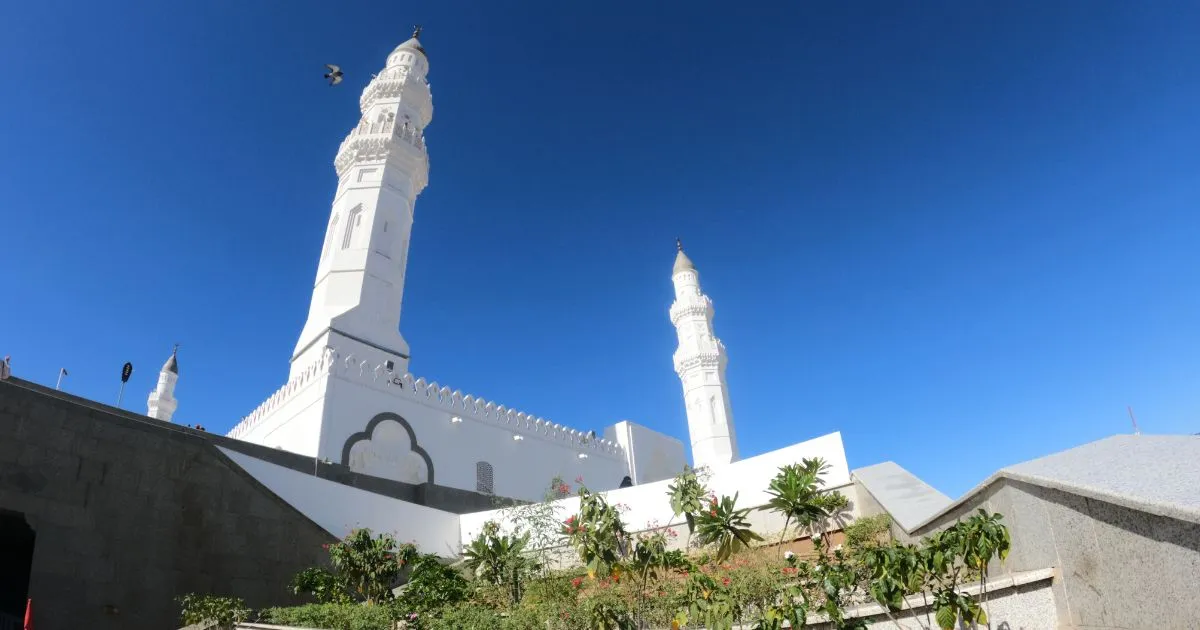Masjid Quba Historical Landmarks: A Visitor’s Guide to Islamic Sites Near Quba Mosque
Table of Contents
Masjid Quba Historical Landmarks: A Visitor’s Guide to Islamic Sites Near Quba Mosque
Welcome, dear visitor, to the blessed area of Quba. While Masjid Quba itself stands as a radiant beacon of faith as the first mosque in Islam, the very ground you walk on is steeped in profound history. The surrounding landmarks are silent witnesses to the dawn of the Islamic era and the footsteps of the Prophet Muhammad (ﷺ) and his noble Companions. This guide will enlighten you on these significant sites, allowing you to truly connect with the rich heritage of this sacred place.
The Blessed Land of Quba
The land upon which Masjid Quba was built originally belonged to the esteemed Companion, Kulthum bin Hidm (رضي الله عنه). He was a leader of the Banu Amr bin Awf tribe from the Al-Aws confederation, who inhabited the Quba area. His property was not just a simple plot; it was a thriving date palm orchard (muraḍ lil-tamr). In a magnificent act of generosity and faith, he dedicated this valuable land for the construction of the first house of worship for the nascent Muslim community in Madinah.
The House of Kulthum bin Hidm (رضي الله عنه)
A short walk towards the Qibla direction (south) from Masjid Quba, you will find a significant historical spot marked by a solitary palm tree and an informational banner. This marks the location of the house of Kulthum bin Hidm. It was in this very home that the Prophet (ﷺ) stayed as a honored guest for several days (reported to be three or more) upon his arrival from Makkah. This house provided him with his first shelter and place of rest in Madinah, making it a site of immense historical importance.
The House of Sa’d bin Khaythama (رضي الله عنه): The Bachelor’s Abode
Not far from Kulthum’s house, also in the Qibla direction, lies the site of the house of another noble Companion, Sa’d bin Khaythama (رضي الله عنه). He was affectionately known as “Sayyid al-Uzzab” (The Master of Bachelors). Recognizing the needs of the Muhajirun (Emigrants) who arrived from Makkah without their families, he generously opened his home to them. It became a hostel for single men, hosting giants of Islamic history like Hamza bin Abdul-Muttalib, Ibn Mas’ud, Suhaib al-Rumi, and Bilal al-Habashi (رضي الله عنهم أجمعين). Sa’d (رضي الله عنه) was a brave warrior and later participated in the Battle of Badr, solidifying his place among the most distinguished Companions.
The Well of Aris (Bi’r Aris) or The Ring Well
Another key landmark near Masjid Quba is the Well of Aris, also famously known as “The Ring Well” (Bi’r al-Khatam). This well carries two beautiful narratives:
- The Ring of Uthman: It is said that the third Caliph, Uthman bin Affan (رضي الله عنه), accidentally dropped his caliphal ring into this well. Despite extensive efforts, the ring could not be recovered, and the well has carried this name ever since.
- The Glad Tidings of Paradise: More significantly, it is narrated that the Prophet (ﷺ) was sitting by this well with Abu Bakr, Umar, and Uthman (رضي الله عنهم) when he gave them the glad tidings of Paradise. He said, “Be glad, for by the One in Whose Hand is my soul, you will enter Paradise.” The location is marked by an educational banner for visitors.
The Mustadal Farm & Museum of the Hijrah
To the west of Masjid Quba, you will find the area known as the Farm of Mustadal. Historically, this was an orchard. Today, a portion of this land has been transformed into a private museum that vividly portrays the Prophet’s (ﷺ) epic Hijrah journey from Makkah to Madinah. Using dioramas, maps, and exhibits, it offers an immersive educational experience. Please note that there is an entrance fee (approximately 45 Saudi Riyals per person).
Thaniyat Al-Wada’ Al-Janoubia (The Southern Farewell Pass)
This mountain pass holds a poignant place in history. It was from this point, located near the area of the mosque and school of another leading Companion, As’ad bin Zurarah (رضي الله عنه), that residents of Madinah would bid farewell to their travelers heading south, often towards Makkah. It was a place of heartfelt farewells and emotional prayers for safe return.
Masjid Bani Unaif (The Mosque of Talha bin al-Bara’)
Located approximately 400 meters from Masjid Quba, this mosque originally was the house of the Companion Talha bin al-Bara’ al-Unaifi (رضي الله عنه). It is reported that the Prophet (ﷺ) prayed in his house. Following the tradition of marking places where the Prophet prayed, the renowned Umayyad Caliph Umar bin Abdulaziz later ordered it to be converted into a mosque.
The Eastern Landmarks: Banu Waqif
On the eastern side of Masjid Quba (to the left when facing Qibla), was the settlement of the Banu Waqif tribe. From them came the Companion Hilal bin Umayya al-Waqifi (رضي الله عنه). His farm is still visible in the area today. Behind it once stood their “Atm”—a fortified castle or tower that was common in pre-Islamic and early Islamic Madinah, serving as a stronghold for defense during tribal conflicts.
Masjid Al-Jumu’a (The Friday Mosque)
While not in the immediate vicinity of Quba, no historical tour of the area is complete without mentioning Masjid Al-Jumu’a, located to the north. As the Prophet (ﷺ) departed Quba for central Madinah, the time for Friday prayer entered. He stopped in the area of the Banu Salim bin Awf tribe where the first Friday prayer in Islamic history was established. Across from the mosque is the site of the house of Itban bin Malik (رضي الله عنه), the imam of that mosque, whose famous story of the Prophet (ﷺ) praying in his home is authentically recorded in Sahih al-Bukhari.
We hope this guide enriches your visit, allowing you to not only pray in the blessed Masjid Quba but also to walk through the pages of history and feel the presence of the great generation that founded the first Islamic community.

